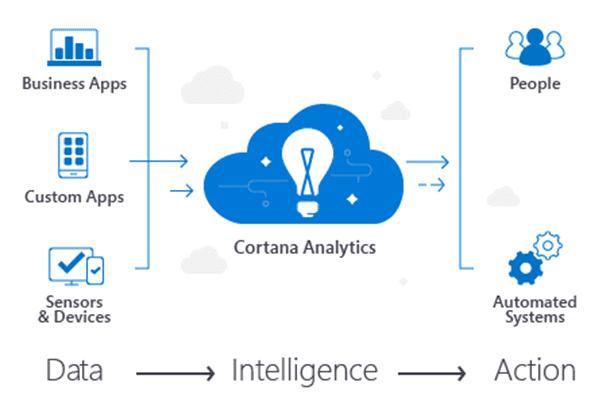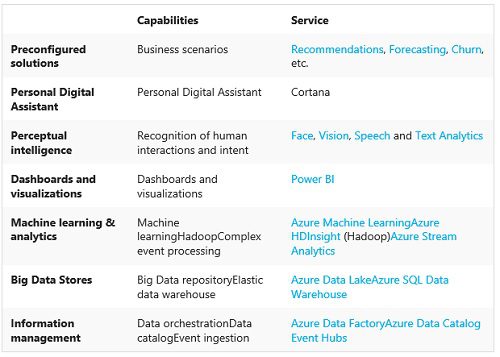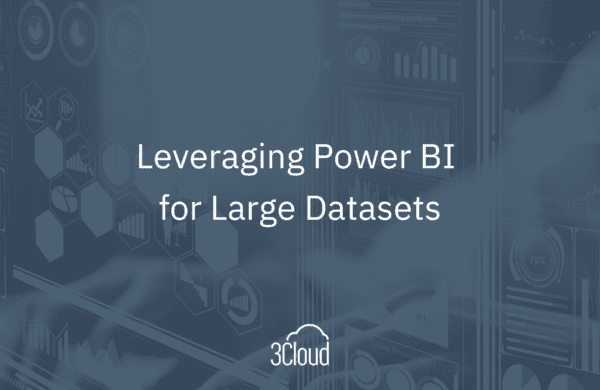
Full disclosure — some of the alluded to ‘evolutionary changes’ are not featured in the linked video, but will be showcased on BlueGranite’s resource page in the days to come.
But on the following Monday July 13th, Microsoft made a follow up announcement about Cortana Analytics Suite, which is probably pretty new to most people. Cortana has been around for a while, as the digital personal assistant and somewhat humorous electronic personality featured heavily in Windows 10 previews, but the idea of Cortana Analytics is definitely something new. IBM has touted its Watson Analytics as a source of answers to business questions, and some of us in the industry have speculated that voice-accessible interaction with the Q&A feature of Power BI 1.0 was an obvious move, but Cortana Analytics is so much more than that…
The message is all about driving Intelligent Action, a focus of Business Intelligence has always been a driving factor of the work we do at BlueGranite, and it’s great to see the focus on the value driven (the informed results) rather than just the technology. Microsoft’s full announcement is here.
But for an abridged recap, we are really giving an enhanced description to the increasingly amazing set of analytics tools now available through Microsoft Azure. From AzureML and various algorithms and models available within, to Power BI, HDInsight and the host of features surrounding data management (like Azure Data Factory, Stream Analytics, Azure Data Warehouse and Azure Data Lake), the set of ‘capabilities’ that are loosely bundled into the Cortana Analytics Suite make some incredible solutions possible while leveraging Microsoft’s staggering investments in cloud platform, from infrastructure to data services to SaaS services like Power BI and other presentation tools. Some details from Microsoft’s announcement here:
So what does this all mean? Does the announcement of Cortana Analytics Suite or Power BI 2.0 throw a wrench into any plans or work in progress?
Not necessarily. The pieces have been in place for a while, and the direction has been clear. Microsoft has been committed to the cloud for some time, and these announcements are a welcome step in the direction of execution. It’s also great to see the tools being grouped together in a meaningful way, with some nice features layered on top. Organizations interested in the tremendous value Microsoft has to offer with the Azure platform should see these releases and crystal clear proof Microsoft is well on its way to offering a dynamic and powerful set of data management, analytics and visualization tools in the cloud. Color me impressed – Microsoft has put its money (R&D?) where its mouth is, and is coming through with the next generation of tools for the cloud first, mobile first world.
At the end of the day, having my analytics respond to questions I ask out loud, with data integrated from numerous sources, and the ability to seamlessly start digging into the data, slicing, exploring and visualizing from any device feels like science fiction. Add into it that I can do all of this with zero deployment of any additional hardware, and it does seem hard to believe… Of course, after seeing what Microsoft is doing with their HoloLens, I think I’m ready!
Is your organization deploying Microsoft Power BI?
BlueGranite offers hands-on, instructor-led training at your facility to help both business and IT teams adopt Microsoft Power BI for self-service business intelligence and analytics. Up to ten attendees will receive expert-led guidance through a complete set of hands-on labs and training modules. After the training, attendees will be able to acquire data, build data models, and create visualizations quickly and easily with Microsoft Power BI. Click here to learn more.





